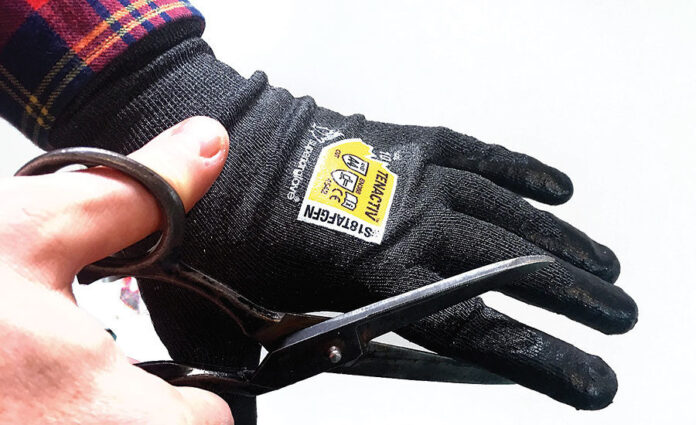When handling sharp items, the user’s hands are protected from cuts by wearing cut-resistant gloves. They are built of materials that are resistant to cuts. These gloves must be chosen depending on several factors, including force, direction, blade sharpness, cut length, and item flexibility. Cut Resistant gloves provide improved traction even on slick surfaces, making them perfect for proper food handling.
They are primarily employed in general upkeep, warehouse work, automobile assembly, metalworking, stamping, pressing, and duct installation. Safety gloves must be worn, but they must also be appropriate for the task.
Features of Cut Resistant Gloves
- Safe to use – It is made stronger by combining several components, including polyethylene, glass fiber, and spandex. As a result, it can endure even the sharpest blades and contribute to preventing major injury.
- Multi-Purpose Uses – They have many uses, including slicing, grating, peeling, wood cutting, woodworking, fishing, etc.
- Machine-washable – The gloves may be washed in a washing machine, cleaned with a mild detergent, and dried. The quality of the gloves won’t be impacted. They have various uses, including slicing, grating, peeling, wood cutting, woodworking, fishing, etc.
- User-Friendly – They are the tightest gloves with the right fitting, making them user-friendly. The gloves’ lightweight, extreme thinness, and elastic construction make them user-friendly. In the event of urgent tasks, the gloves may be worn with ease.
Here are a few essential factors to consider when choosing cut-resistant gloves:
Consider Cutting Tools
You should be aware of the cutting instrument you’ll be using with the glove before rushing out to get one. Different cutting gloves are made for various cutting instruments and perform well in various settings.
Think about the cutting tool’s blade’s sharpness, the direction, and duration of the cut, the force applied, if the tool is automated, and the length of the blade. You can choose the best cut-resistant gloves that will completely shield you from injury in this way.
Consider Cut-Resistant Glove Quality
The quality and durability of the cut-resistant glove should be prioritized while choosing one. The cut-resistant gloves’ construction material, as well as its design and method of manufacture, are taken into account when evaluating quality.
You might not always have the eye or knowledge to recognize which cutting gloves are best for you. You should consult experts in the glove sector in these situations.
Consider Cut Resistant Gloves Material
The materials used to make cut-resistant gloves have an inner “core” joined by an outside wrap. Certain gloves are additionally coated to offer thin protection with a reliable grip.
Fiberglass, basalt, steel, or a mixed material can be used as the core. Steel often offers the most protection, while fiberglass typically provides the least.
Types of gloves based on the material used to make them
- Leather – They are generally punctured proof and feature an abrasion-resistant inner. It is more resistant to heat and sparks than standard knit gloves.
- Chain-mail – Made of metal mesh, they are typically used in the food business. It comes in handy while working with sharp knives and other culinary equipment.
- Palm coated – It has a fully covered palm, leather, a puncture, or a one-of-a-kind design. It is a long-lasting, one-of-a-kind combination of materials that protect against various threats.
- Metal Mesh – It is a self-adjusting wrist fastening method. There are no straps to fasten, so it is flexible and comfy. It is extremely durable, has a long wear life, and is perfect for use with meat and poultry.
- Kevlar – Kevlar is the ideal material for great protection. It is commonly employed in heavy kitchen preparation, high-flame situations, the car industry, etc.
- Spectra – It offers excellent complete protection. It is suited for slicing, dicing, and chopping food in high moisture conditions.
- Knit – They protect against cuts and allow for simple handling of light cardboard and appliance assembly. It ensures a secure fit and protects against pollutants.
Conclusion
Cut-resistant gloves differ from standard work gloves due to their design and substance. You will be protected from abrasion, laceration, and puncture injuries. Because hand injuries are a primary occupational safety concern, hand protection is critical. So, start looking for cut-resistant gloves for your job right now.
